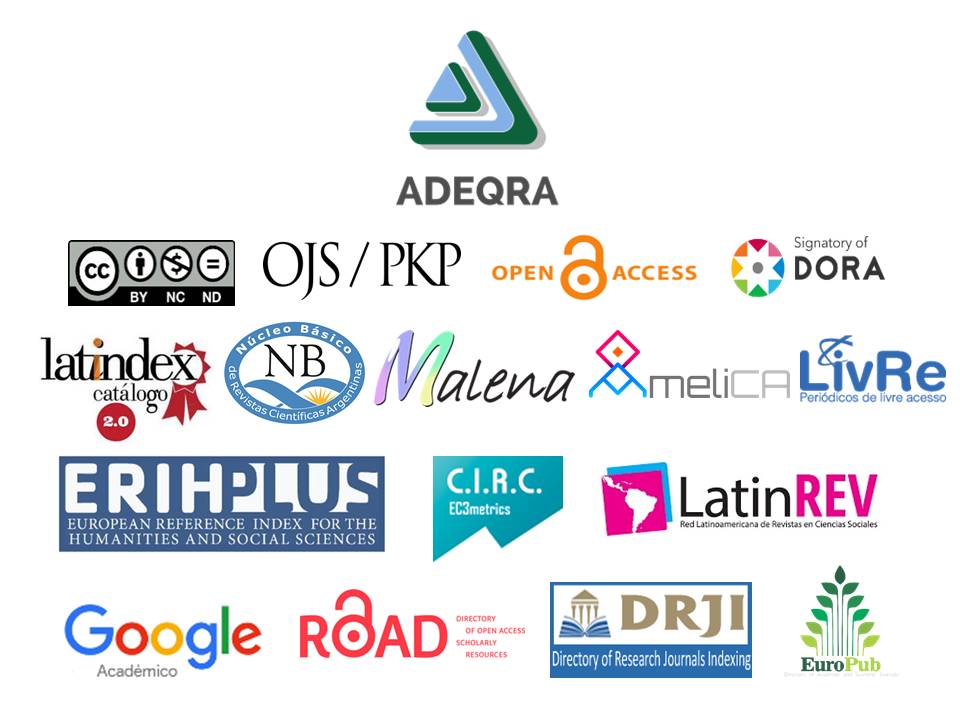Technologies that contribute to the development of competences in Organic Chemistry
Keywords:
organic chemistry, TIC, competences, procedural contentsAbstract
This paper presents an analysis of Information Technology and Communication Technologies (ICT) applied to the teaching of Organic Chemistry at the university level. These technologies have been used with students of two subjects of Organic Chemistry of the Faculty of Engineering and the Faculty of Agronomy of the National University of the Center of the Province of Buenos Aires, in devices such as netbooks, notebooks (PC), smartphones and tablets. It also addressed the problem of cell phone use, by students in their daily lives and in particular, in relation to distractions and disruptions in the classes. The skills of the profile of the future engineer were compared with the associated procedural contents in the subject of Organic Chemistry; and the contribution of ICT to their development. The use of these tools in different instances of the teaching-learning process was evaluated through a pre-test and post-test. With the use of ICT it was possible to encourage the interest of the students and improve the understanding and appropriation of the contents developed in class such as hydrocarbons, alcohols, stereochemistry and aromatics, among others.
References
Carmigniani, J., Furht, B., Anisetti, M. Ceravolo, P., Damiani, E. y Ivkovic, M. (2010). Augmented reality technologies, systems and applications. Multimedia Tools and Application, 51(1), 341-377.
CONFEDI. (2014). Consejo Federal de Decanos de Ingeniería. Universidad FASTA. Mar del Plata.
Daza Perez, E., Gras Martí, A., Gras Velázquez, A., Guerrero Guevara, N., Gurrola Togasi, A., Joyce, A., Mora Torres, E., Pedraza, Y., Ripoll, E. y Santos, J. (2009). Experiencias de enseñanza de la Química con el apoyo de las TIC. Revista educación en línea, Universidad Autónoma de México, 20 (3), 320-329.
De Pro Bueno, A.J. (2013). Enseñar procedimientos: por qué y para qué. Alambique: Didáctica de las ciencias experimentales, 73, 69-76.
Delletesse, M.I., Colasurdo, V., Goñi Capurro, M.J. y Wagner, C.C. (2017). XI Jornadas Nacionales y VIII Jornadas Internacionales de Enseñanza de la Química Universitaria, Superior, Secundaria y Técnica, Ciudad de Buenos Aires, Argentina.
Delletesse, M.I., Magariño, M., Mateo, C. y Eyler G.N. (2018). Jornadas de Innovación Educativa. Olavarría, Argentina.
Mendoza Bernal, M. I. (2014). El teléfono celular como mediador en el proceso de enseñanza – aprendizaje. Revista Omnia, 9-22.
Pontes, A. (2005) Aplicaciones de las TIC en la educación científca. Primera parte: funciones y recursos. Revista Eureka sobre Enseñanza y Divulgación de las Ciencias, 2(1), 2-18.
Raviolo, A. (2009) Recursos didácticos visuales en la clase de ciencias. II Jornadas de Enseñanza e Investigación Educativa en el campo de las Ciencias Exactas y Naturales, Un espacio para la reflexión y el intercambio de experiencias, La Plata, Argentina.
Rose, D.H. y Meyer, A. (2002). Teaching Every Student in the Digital Age: Universal Design for Learning. ASCD.
Yildrim Z., Ozden M. y Aksu M. (2001). Comparison of hypermedia learning and traditional instruction on knowledge acquisition and retention. The Journal of Education Research, 94(4), 207-214.
Acdlabs, Estructura del benceno recuperado el 18 de Julio de 2019 de http://4.bp.blogspot.com/-OQqcF-cMRZ4/T99lwqts9lI/AAAAAAAAAJA/M7YYBlUbLyE/s1600/benceno%2520tridimensional.gif
Acidos grasos recuperado el 18 de Julio de 2019 de https://biologiacampmorvedre.blogspot.com/2013/02/bloque-i_24.html
Chiralité et médicaments recuperado el 18 de Julio de 2019 de https://play.google.com/store/apps/details?id=com.miragestudio.drugs
Isomérie Z/E - Mirage recuperado el 18 de Julio de 2019 de https://play.google.com/store/apps/details?id=com.miragestudio.isomerze
University of Surrey, Mecanismo SN1 recuperado el 18 de Julio de 2019 de https://www.youtube.com/watch?v=JmcVgE2WKBE
University of Surrey, Mecanismo SN2 recuperado el 18 de Julio de 2019 de https://www.youtube.com/watch?v=h5xvaP6bIZI
WebMo recuperado el 18 de Julio de 2019 de https://play.google.com/store/apps/details?id=net.webmo.android.moledit
Downloads
Published
How to Cite
Issue
Section
License
Copyright (c) 2019 Maximiliano I. Delletesse, R. Karina Nesprias, G. Nora Eyler

This work is licensed under a Creative Commons Attribution-NonCommercial-NoDerivatives 4.0 International License.



